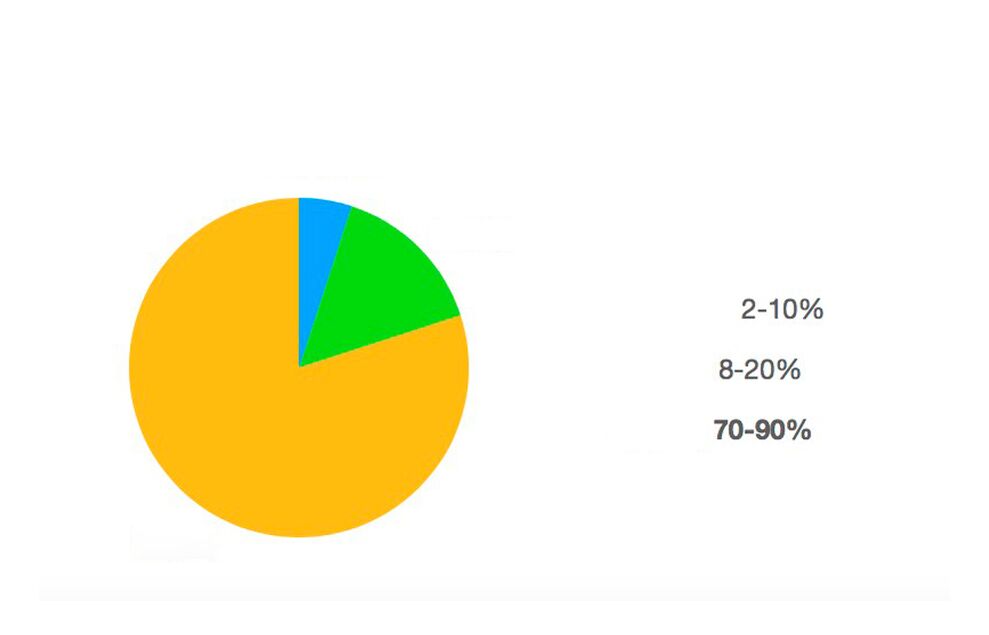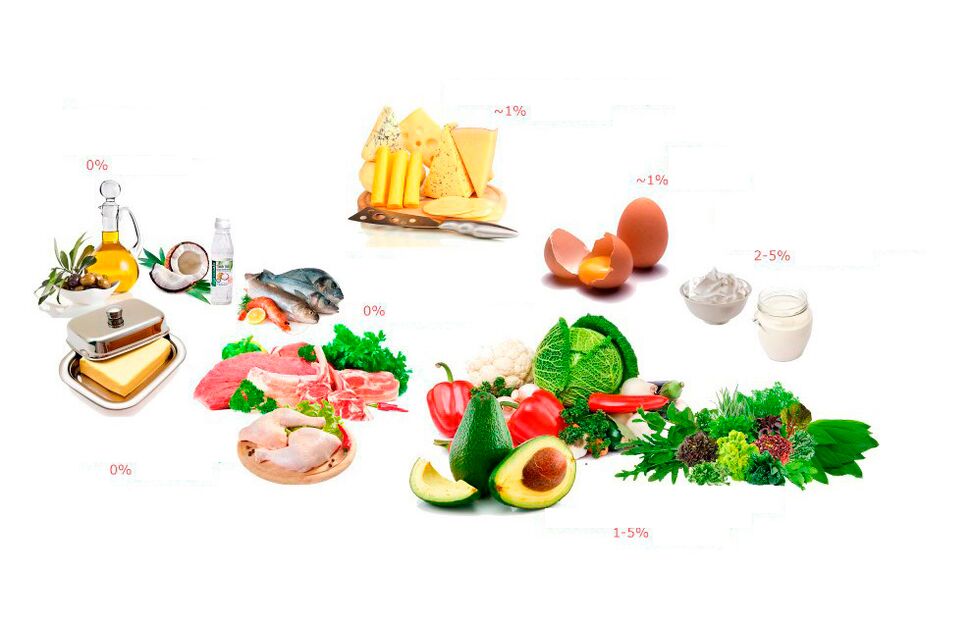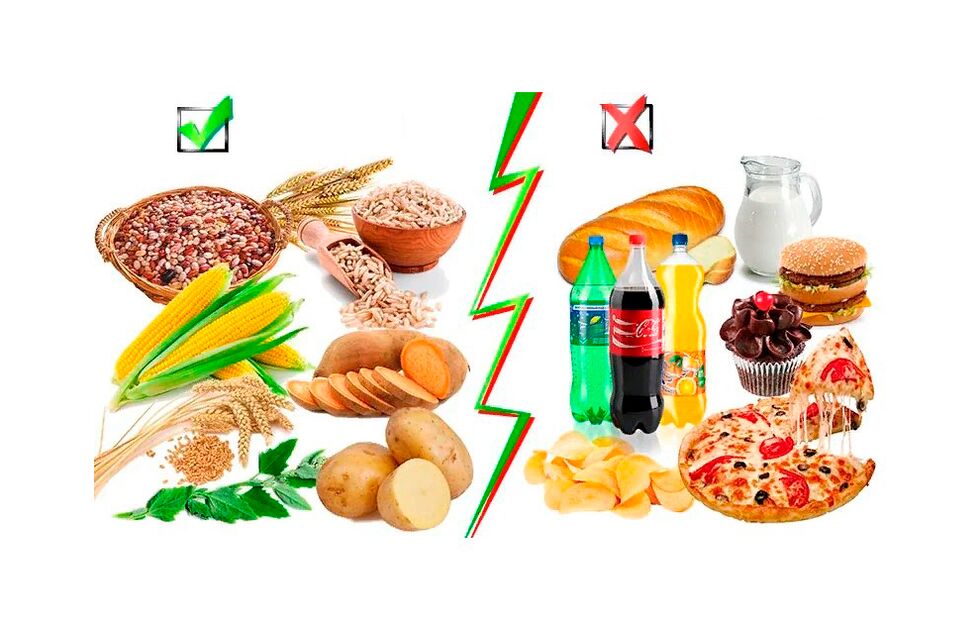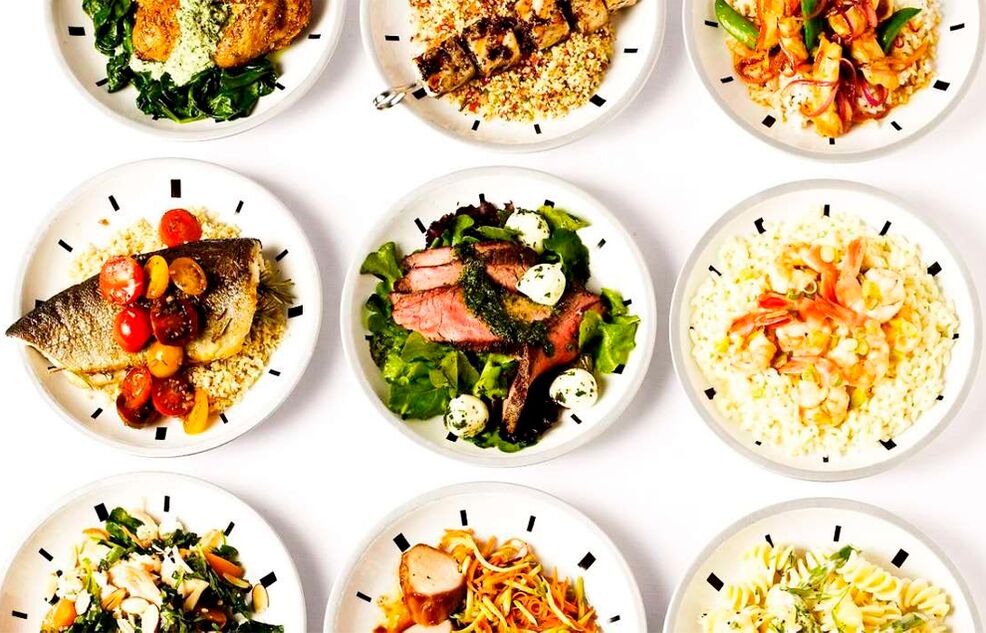A carb-free diet is an extreme version of a low-carb diet, where the diet is focused on protein, healthy fats, and fiber.
Our bodies usually use carbohydrates (glucose) to supply our body and brain with energy. Reducing them leads to a decrease in insulin production in the body, which causes it to begin as an alternative source to break down proteins (muscle stores) and stored fats. This leads to rapid weight loss.
Depending on age, weight, physical activity and goals (weight loss, muscle building, dehydration of the body), the body needs different amounts of proteins, fats and carbohydrates (BJU). According to experts, the average daily consumption is as follows:
- 45-65% carbohydrates
- 20-35% fat
- 10-35% proteins
With a low-carbohydrate diet, fats become the main source of calories and carbohydrates are reduced to 2-10%.

The general principles of a carbohydrate-free diet are as follows:
- The amount of carbohydrates consumed is reduced from 0 to 30 grams per day.
- Make sure you drink at least 8-12 glasses of water daily to help remove toxins from your body.
- Since most of the diet is made up of proteins and fats, you need to focus on their benefits. It is important to reduce your consumption of trans fats and not to overdo it. For example, a 2018 study argues that a low-carbohydrate diet that favors plant-based proteins and fats over animal sources is linked to lower mortality. In addition to reducing your waistline, think about your long-term health.
- Eliminating carbohydrates entirely is almost impossible as they are found in many foods. Most importantly, those with a glycemic index over 50 should be avoided.
The most popular type of low carb diet today is the keto diet, where the ratio of BJU is 75% fat, 20% protein and 5% carbohydrates. One of the most famous and popular is also the Ducan Diet, the basis of the diet, in which there are proteins.
Pros and cons of a carbohydrate diet
Any diet is limited and stressful, so it is important to evaluate all the pros and cons of the future regime before experimenting with the diet.
Benefits of a Carbohydrate Free Diet
- Replacing carbohydrates with proteins affects the hunger hormone ghrelin, which can make you feel full and reduce snacks and daily caloric intake.
- Weight loss in the first few weeks will be rapid. This is primarily due to reduced fluid intake. Carbohydrate-rich foods not only contain a lot of water, they also excrete it through the metabolism. For this reason, those looking to lose weight quickly often opt for a carbohydrate-free diet. A study of 79 obese adults found that those who limited their carbohydrate intake to less than 30 grams per day lost about 4 kg more over 6 months than those who instead limited their fat intake.
- Carbohydrate intake has a significant impact on blood sugar and insulin levels. Excess glucose is linked to many health problems such as type 2 diabetes, cancer, and cardiovascular disease. Eating a low-carbohydrate diet will reduce the likelihood of these occurrences.
- Studies have shown that eating a carbohydrate-free diet can relieve symptoms of Alzheimer's disease and slow its progression.
Disadvantages of a carbohydrate-free diet
- By reducing the amount of carbohydrates consumed, insulin levels drop and the hormone glucagon increases, causing the body to burn fat. However, when the body switches to this form of fat burning, a process called ketosis occurs and compounds called ketones build up in the body. This process can have side effects such as nausea, headache, bad breath, fever, insomnia, etc. In addition, fatigue and drowsiness are common. For this reason, problems arise in everyday life that, among other things, significantly reduce the number of training units and impair the quality of their performance.
- A low-carbohydrate diet inevitably leads to a lack of fiber. A lot of research suggests that the effects of beneficial bacteria in our intestines when we consume fiber are vital to overall health. Bacteria work on fiber to make short chain fatty acids that prevent harmful bacteria from growing, maintain gut health, and have anti-inflammatory and antimicrobial properties. In addition, it is difficult with such a diet to supply the body with sufficient vitamins, especially of groups B and C, and minerals such as potassium.
- Following a diet for long periods of time can increase the risk of high cholesterol, osteoporosis, irregular heartbeat, and kidney problems.
- The most common side effects of a carbohydrate-free diet are constipation or indigestion.
Who is a low carb diet not suitable for?
- People with diabetes or chronic conditions who require close monitoring of their blood sugar levels.
- People with problems of the cardiovascular system, blood pressure and gastrointestinal tract.
- Pregnant and breastfeeding women.
- Elderly people, teenagers and those with a low body mass index.
- People with diet-related emotional or psychological problems, including eating disorders.
Before trying a carbohydrate-free diet, consult with a professional to make sure it is not harming you.
General guidelines for a carbohydrate-free diet
Low-carb foods mainly include oils: coconut, butter or ghee, olive (virgin), avocado oil, etc.
While all oils and fats contain zero or minimal carbohydrates, not all are healthy. Some oils are processed and contain chemicals. In addition, most vegetable oils contain many omega-6 fatty acids, which, if consumed in excess, can cause inflammation. These fats can also inhibit the anti-inflammatory effects of other fats such as omega-3 fatty acids.
For this reason, it's best to avoid oils high in omega-6 fatty acids like soybean, corn, canola, and peanut butter.

Since the diet consists mainly of meat, which is mainly made up of proteins and fats, make sure that it is of high quality and ideally organic, with no additives, as their main purpose is to improve the taste and extend the shelf life of the product. Try not to buy processed meat products. Many manufacturers add sugar, spices, and flavorings to increase the amount of carbohydrates.
Although dairy products contain carbohydrates (sugar in the form of lactose), these are mostly negligible. Sour milk can be used to get protein, calcium, vitamin D, and potassium. Milk and yogurt are the most carbohydrates, but if you're not ready to leave them out entirely, choose products with no added sweeteners or flavorings, and it is important to monitor the number of servings.
Particular attention should be paid to food processing. For dieting, use recipes that involve boiling, stewing, and steaming. Baking makes sense. And it is better to completely refuse fried food.
You also need to choose foods with a low glycemic index (up to 50). They are loaded with slow carbohydrates that take a long time to break down and leave you feeling satiated. In general, it should be noted that they get fat not from carbohydrates, but from an overly high calorie diet and a sedentary lifestyle.

What foods should you eat and avoid on a carbohydrate-free diet?
Healthy foods low in carbohydrates
- Meat and low-carbohydrate animal products: chicken, beef, turkey, lamb, pork, eggs, butter, cheese
- Seafood: salmon, catfish, cod, shrimp, sardine, herring, anchovy, trout
- Spices: herbs and spices
- Low calorie drinks: water, black coffee, and tea
- Nuts and seeds (low carb): almonds, walnuts, pumpkin seeds, sunflower seeds, pistachios, cashews
- Fat-free vegetables and starch-free fruits: broccoli, zucchini, bell pepper, eggplant, cucumber, cauliflower, leafy vegetables, Brussels sprouts, celery, asparagus, mushrooms, coconut, avocado
Food to avoid
A carbohydrate-free diet severely restricts and excludes several food groups, including:
- Grains and grains: rice, barley, quinoa, wheat, bread, pasta
- Sweets and pastries: cakes, cookies, candies
- Carbonated and sugary drinks
- Fruits and berries: apples, oranges, bananas, kiwi, pears
- Starchy vegetables: peas, corn, zucchini, potatoes
- Legumes: beans, chickpeas, lentils, peas
- Dairy products: milk and yogurt
- Spices with added sugar: ketchup, barbecue sauce, salad dressings
- Alcohol: beer, wine, schnapps, sweet cocktails, port wine, vermouth
Carbohydrate-free menu for a week
Despite the fact that the list of available foods is significantly reduced, the diet can be varied. An example of a menu for a carbohydrate-free diet during the day.
Monday
Breakfast: omelette with mushrooms
Lunch: beef broth
Dinner: oven-baked turkey fillet with asparagus
Tuesday
Breakfast: flaxseed bread, guacamole and poached egg
Lunch: miso soup
Dinner: oven-baked zucchini with cheese
Wednesday
Breakfast: Salad with salmon and avocado
Lunch: broth with chicken meatballs
Dinner: pasta with bacon and cream sauce
Thursday
Breakfast: salad with chicken, cucumber, feta and spinach
Lunch: zucchini noodles with steamed chicken schnitzel
Dinner: peppers stuffed with seafood
Friday
Breakfast: curd casserole
Lunch: mushroom soup
Dinner: steak and green vegetables
Saturday
Breakfast: egg with bacon
Lunch: brown rice with trout
Dinner: stewed cabbage with meat
Sunday
Breakfast: oatmeal with some almonds and boiled eggs
Lunch: boiled chicken with green peas
Dinner: seafood and green vegetable salad

Remember that a total and long-term ban on carbohydrate consumption is extreme and extreme eating habits are of little use. Proper diet should be balanced and contain all of the vitamins and nutrients the body needs to function effectively. Experts have mixed reviews of a low-carb and low-carb diet, but everyone agrees that such a diet should be short-term and should not be followed for more than 2 consecutive months.













































































